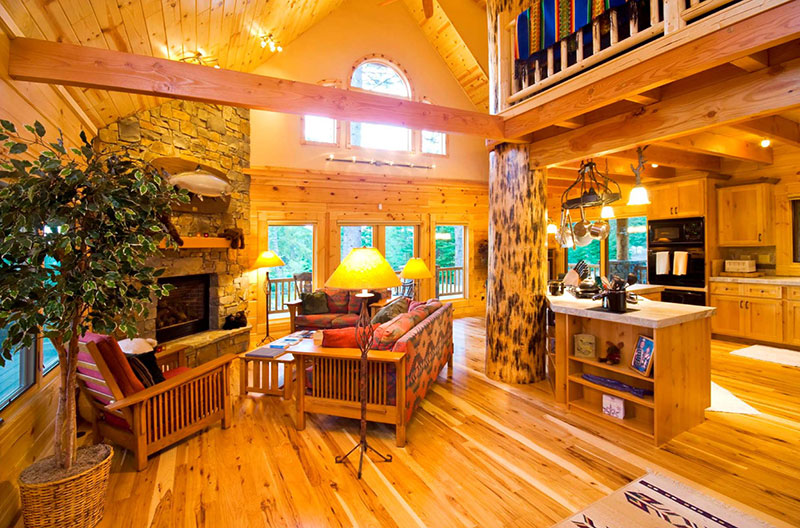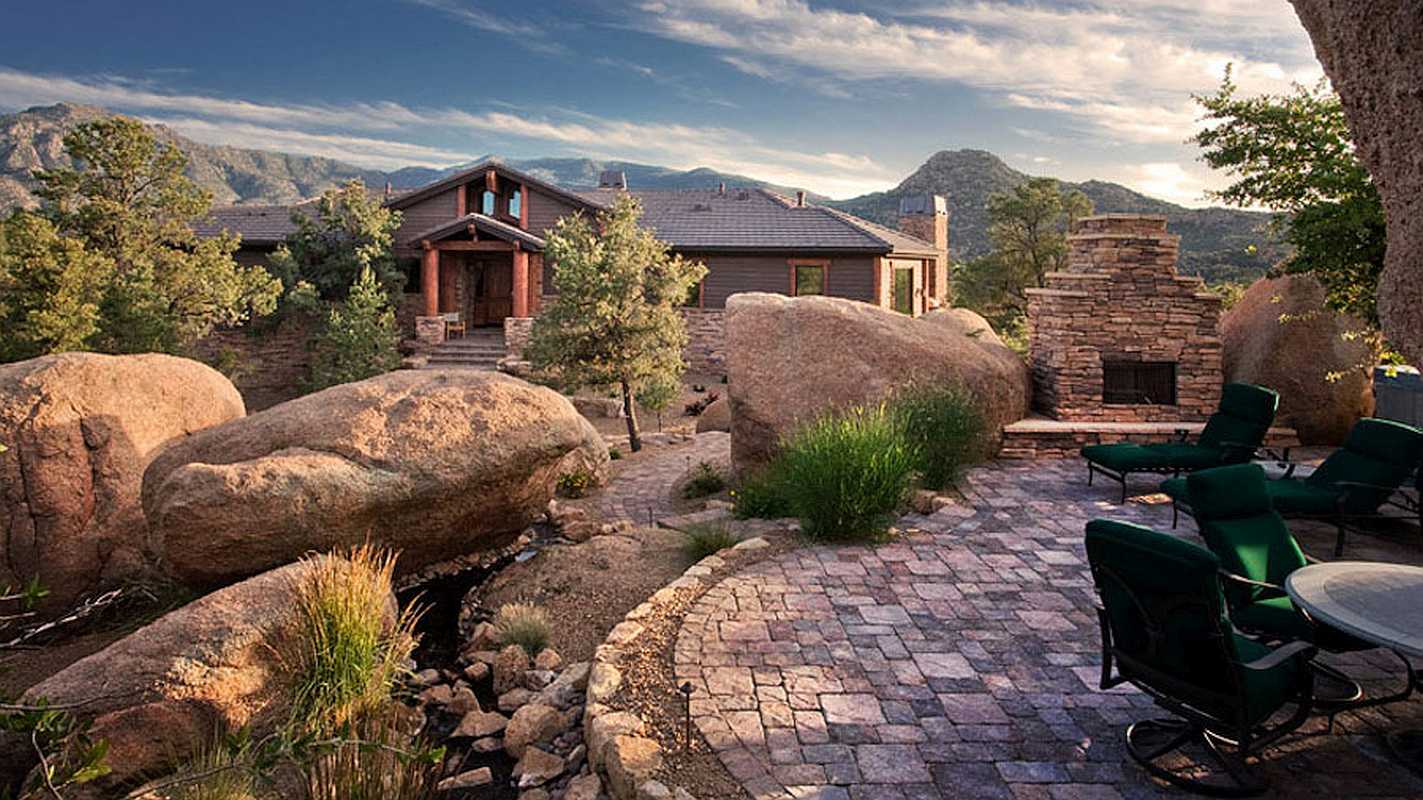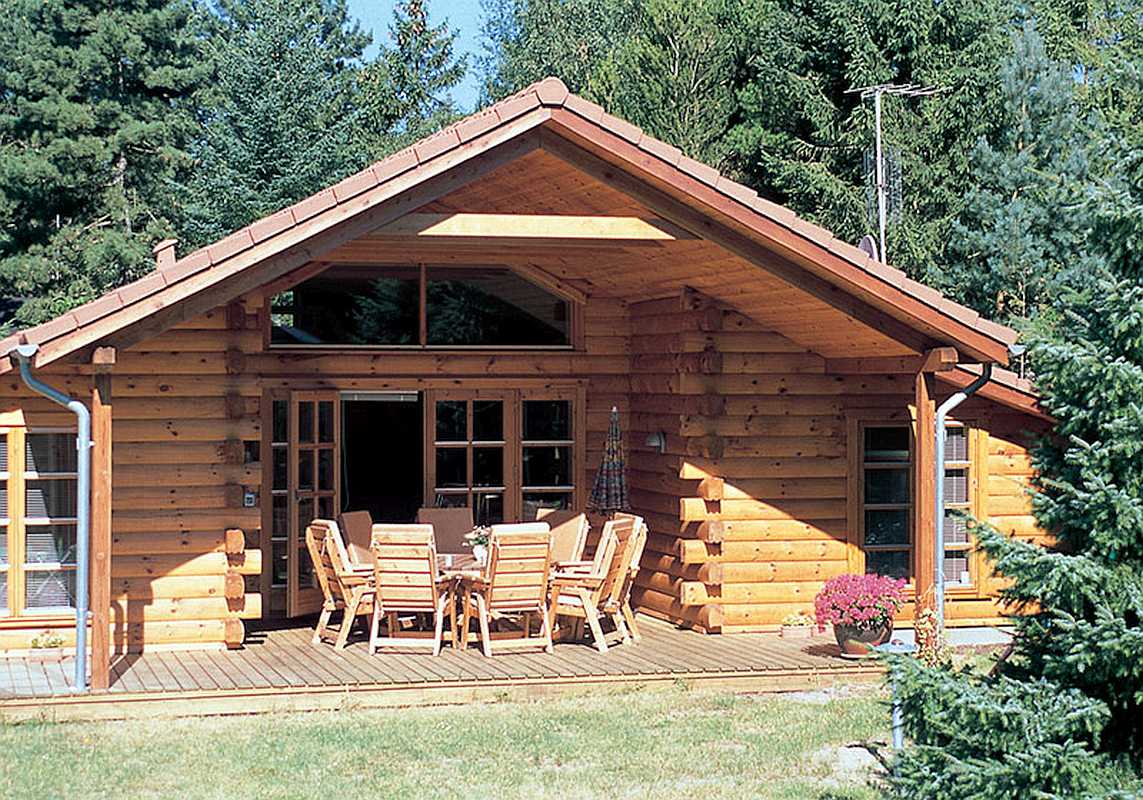If you’ve decided to embrace log cabin living, you’re already ahead of the game when it comes to eco-friendly living. Log cabins are some of the most sustainable dwellings on the planet. They’re made from renewable materials, and if you’ve ever wondered “Are log cabins energy efficient?”, the answer is a definitive yes.
If you’re mapping out a plan to build a log home, now is the best time to think about how to make your log home as sustainable and energy efficient as possible. Treading lightly isn’t just good for nature, it’s also good for your family’s health. Keep reading for tips and information on log home energy efficiency and more.
3 Reasons Log Homes Are Green

Trees are one of nature’s best gifts. People have been using timber to build homes and shelters for thousands of years. Here are three reasons log homes were and still are the most eco-friendly choice.
1: They’re renewable and sustainable.
Wood is an inherently sustainable and renewable resource, since harvested trees can be replanted. There’s understandably a lot of focus on deforestation, but it’s often overlooked that responsibly harvesting wood can help preserve forests by reducing the likelihood of catastrophic wildfires like the ones that have ravaged the Western US in recent years.
Wood also requires significantly less energy to manufacture than materials like steel and concrete, the latter of which consume as much as 20%-30% of annual global fossil fuel use. Good forestry management practices can help ensure that forests continue to pull CO2 out of the air—a claim concrete and steel manufacturers simply cannot make.
You can feel good knowing that owning a log cabin home helps reduce global carbon dioxide emissions compared to traditional brick and stick-built homes.
2: They’re energy efficient.
Wood has excellent natural insulating properties, thanks to its thermal mass. According to the National Association of Home Builders (NAHB), log homes often meet or exceed the Department of Energy’s (DOE) ENERGY STAR standards for new construction.
In the winter months, log walls absorb heat from the daytime sun and slowly release it into the home at night, providing natural temperature control. Yet log walls can also keep a home cooler in summer, thanks to the natural insulating properties of wood.
And unlike concrete, steel, and other man-made materials, wood does not require a thermal break (such as foam insulation) between the building envelopes.
In most climate conditions across the country, a well-constructed milled log home can help keep your home cooler in summer and warmer in winter—enough to meet and exceed residential energy codes. However, you should check with your local building authority to determine if additional insulation will be required to meet the specific energy efficiency codes in your particular area.
3: They promote better indoor air quality.
The air inside a home can be surprisingly poor due to poor ventilation, toxic building materials, and other factors. Log homes tend to have better air quality than traditional homes for a variety of reasons:
- Log homes are often located in areas with better air quality. Cities tend to have higher concentrations of all kinds of pollutants, from ground-level ozone to unhealthy particulates. In the countryside, you not only benefit from lower pollution levels, but also healthy phytochemicals in the air from plants and fungi. Whether you decide to build your log home in the woods, near your favorite lake, or on the prairie, you can take comfort in knowing your family will be breathing healthier air.
- Log walls naturally regulate indoor humidity levels, which improves indoor air quality and makes the inside of your home more comfortable. Wood is a hygroscopic material, which means it absorbs and releases moisture, helping to keep humidity levels balanced.
- Log homes typically feature lots of windows, which helps maximize airflow throughout the home. This helps prevent everything from pet dander to pollen to smoke (from cooking, for example) from lingering in the air.
Better indoor air quality means less reliance on devices like air purifiers and dehumidifiers, which require energy and materials to manufacture and increase your energy bills.
How to Make Your Log Cabin Even Greener

If you’re committed to living lightly on the planet or just want to reduce your energy bills, here are a few tips to make your log cabin even greener.
Choose milled logs – If log home energy efficiency is your goal, you’ll want to go with milled logs for your home, which are precisely cut and professionally dried to prevent warping and shrinkage. This ensures a weather-tight seal, which can help keep energy costs down.
Use alternative energy sources – Even a small solar installation can help you save on energy costs. While the initial price tag can cause a bit of sticker shock, most homeowners will see a return on their investment in a handful of years, due to savings on utility bills. Incentive programs are also available in many states. If you live in a rural area where power intermittency is an issue, solar panels can help you weather storms and outages, boosting your sense of security.
Choose energy-efficient appliances – Log cabins have rustic charm, but that doesn’t mean you need to settle for the energy-guzzling appliances of old. Today virtually every type of appliance comes in an energy-saving model, from refrigerators to HVAC systems. Also think about a smart thermostat and other internet-connected appliances, which can help you manage your energy use.
Grow a food garden – A huge amount of energy goes into growing commercially grown food, which often travels long distances to get to your local market. Growing even a small portion of your own food can cut down on greenhouse gas emissions and help your family become more self-sufficient.
Harvest water – A rainwater harvesting system can capture both rain and snowmelt instead of letting it run off into gutters, streams, and creeks. You’d be surprised how much potable (if filtered) and non-potable water you can supply for your home and garden with even a modest system.
Build an Energy-Efficient Log Cabin with eLoghomes
Energy efficiency is our priority at eLoghomes. Our log home kits include precision-milled logs designed to boost your home’s energy performance. Our 6-Point Weatherlink™ System is a proprietary construction method that ensures a weather-tight system, no matter what nature throws your way.
Learn more about our design advantages, then search our extensive catalog of more than 200 log home models to find your perfect eco-friendly log cabin!

